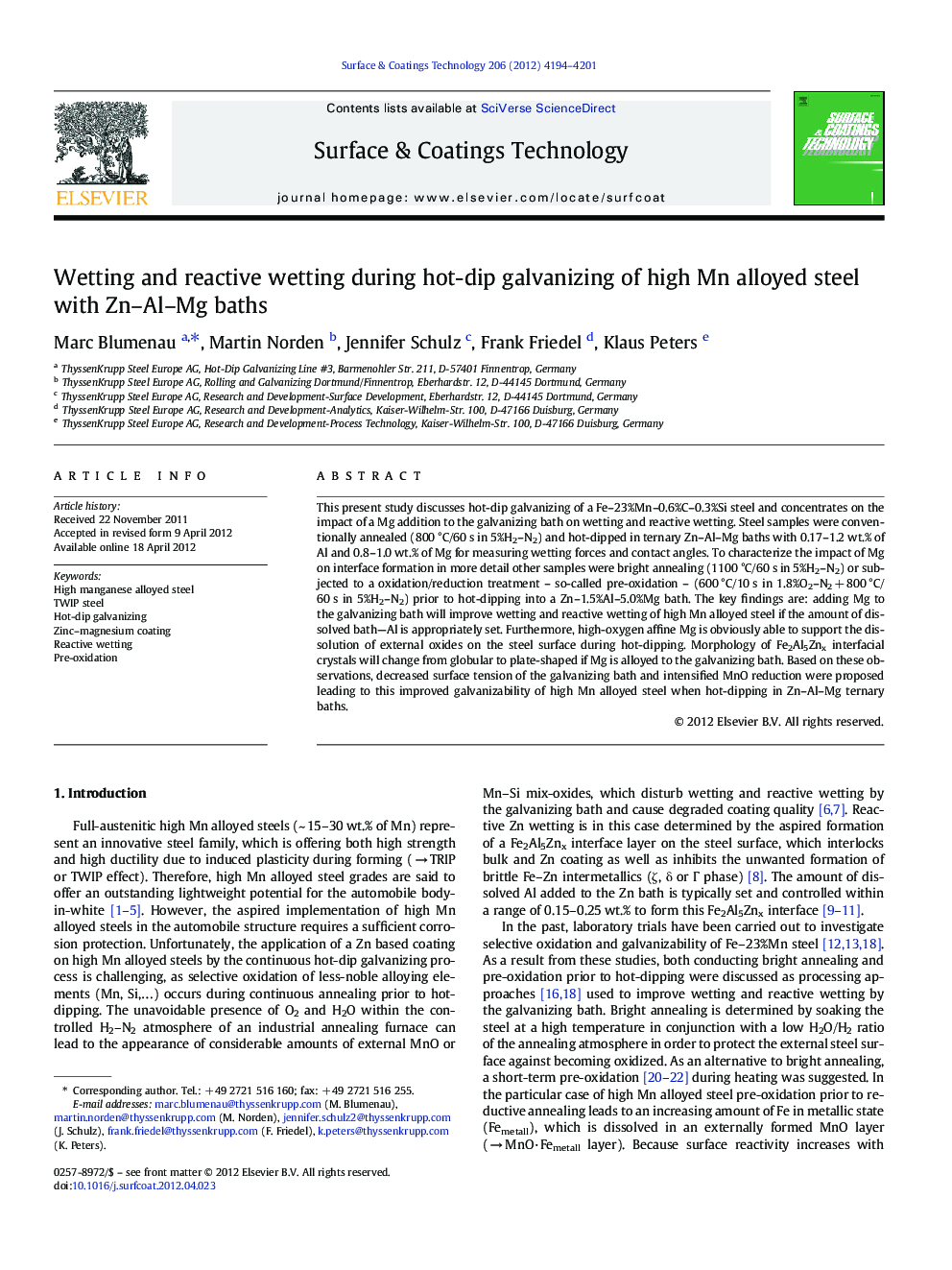| Article ID | Journal | Published Year | Pages | File Type |
|---|---|---|---|---|
| 1658456 | Surface and Coatings Technology | 2012 | 8 Pages |
This present study discusses hot-dip galvanizing of a Fe–23%Mn–0.6%C–0.3%Si steel and concentrates on the impact of a Mg addition to the galvanizing bath on wetting and reactive wetting. Steel samples were conventionally annealed (800 °C/60 s in 5%H2–N2) and hot-dipped in ternary Zn–Al–Mg baths with 0.17–1.2 wt.% of Al and 0.8–1.0 wt.% of Mg for measuring wetting forces and contact angles. To characterize the impact of Mg on interface formation in more detail other samples were bright annealing (1100 °C/60 s in 5%H2–N2) or subjected to a oxidation/reduction treatment – so-called pre-oxidation – (600 °C/10 s in 1.8%O2–N2 + 800 °C/60 s in 5%H2–N2) prior to hot-dipping into a Zn–1.5%Al–5.0%Mg bath. The key findings are: adding Mg to the galvanizing bath will improve wetting and reactive wetting of high Mn alloyed steel if the amount of dissolved bath—Al is appropriately set. Furthermore, high-oxygen affine Mg is obviously able to support the dissolution of external oxides on the steel surface during hot-dipping. Morphology of Fe2Al5Znx interfacial crystals will change from globular to plate-shaped if Mg is alloyed to the galvanizing bath. Based on these observations, decreased surface tension of the galvanizing bath and intensified MnO reduction were proposed leading to this improved galvanizability of high Mn alloyed steel when hot-dipping in Zn–Al–Mg ternary baths.
► High Mn alloyed steel can be hot-dip galvanized with ZnAlMg melts. ► Mg in the galvanizing bath can improve (reactive) wetting of high Mn alloyed steel. ► Bath-Mg is assumed to support dissolution of external oxides during hot-dipping. ► By using a ZnAlMg bath morphology of Fe2Al5 interfacial crystals is plate-shaped.
